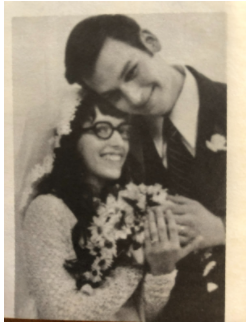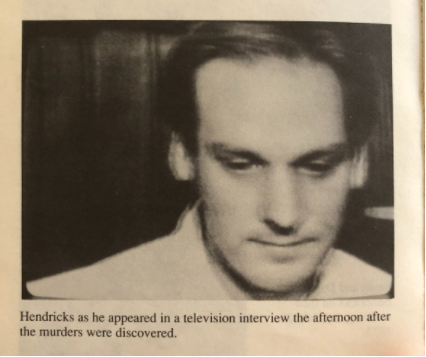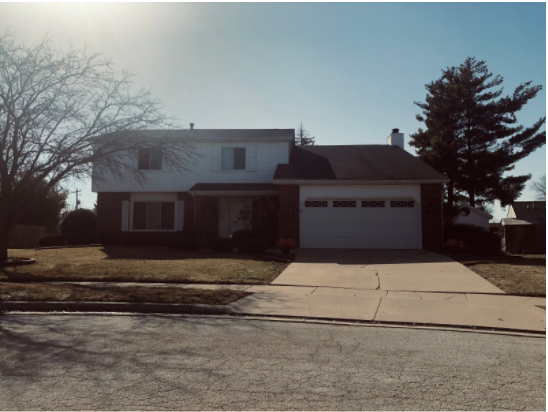
Photo: Samira Kassem
We are coming up on the 40 year anniversary of the 1983 triple homicide that left 30 year old Susan Hendricks, nine year old Rebekah Hendricks, seven year old Grace Hendricks and five year old Benjamin Hendricks hacked to death in their own Bloomington home and their killer is yet to be captured.
True crime fanatics and ameature sleuths gather ‘round because here are the facts of Bloomington’s own infamous cold case.
David Hendricks was a successful orthopedist known for developing the C.A.S.H back brace. In 1982, he moved his family and his young business to 313 Carl Drive in Bloomington where he continued to achieve great financial success.
Hendricks and his wife Susan were members of a strict fundamentalist sect of Protestantism known as the Plymouth Brethren and ran their household in accordance with its teachings.
The family mostly kept to themselves and spent most of their time with family or other members of their religious group.
David, however, was known as a staple of the Bloomington community as he was a young business owner with great wealth.
Life was great for the Hendricks family until early November of 1983.
The afternoon of November 7 started like any other. David rode his motorcycle to the Bloomington airport where he kept his small airplane that he often liked to spend time working on. Susan went to a doctor’s appointment and then hung out with the children while David was out.
That evening, Susan left for Delevan–a small town about 40 minutes from Bloomington–for a baby shower that she was hosting with her sister.
David takes the children to their favorite restaurant, Chuck E. Cheese, where they order a vegetarian pizza and a pitcher of root beer.
The children play games until David tells them it is time to leave around 8:00. At 8:15 the children pick out new library books at the book mobile and they return home shortly after.
The children are in bed by 9:30, Susan returns at 10:30 and her and David chat for a bit before she goes to bed at 11:00.
David then leaves shortly after 11:00 for a business trip where he planned to drive all night, check into a hotel in Wisconsin and then spend all of November 8 stopping at orthopedic businesses to sell his back brace on his way back home.
There is record of David checking into his hotel at a time that would have made sense with this timeline of events.

Photo courtesy of Steve Vogel’s book Reasonable Doubt.
On November 8, David began his trip back home and attempted to call his family in the morning without an answer. He does not think much of it and waits until the afternoon to try again. After being unable to reach Susan and the children, David asks his assistant to try, reaches out to a neighbor to knock on the door of their house and speaks with Susan’s mother. None of these attempts are successful and David gets worried. Finally, David finds out that Susan and the kids did not show up to a family dinner they were set to attend that night and he fears that they may have gotten in a car accident on their way. He makes the following call to the Bloomington Police Department:
Dispatcher: Bloomington Police.
Hendricks: Yeah, this is Dave Hendricks calling from, I’m up in Madison, Wisconsin. I live in Bloomington and I’m on a business trip right now. I’m a little concerned about my wife and kids because I’ve been trying to call them all day and haven’t gotten…
Dispatcher: Where do you live?
Hendricks: …any answer. I live at 313 Carl Drive. Now here are the circumstances. I’ve tried to call them periodically through the day and haven’t gotten them. I’m sure it’s no big deal, no big emergency, but, uh, they’re supposed to be at a dinner date tonight at 5:30 so I called there to talk to her there and, uh, they never have showed up there.
Dispatcher: What’s your wife’s name?
Hendricks: Susan Hendricks and they’re not at home ’cause I called a neighbor who’s gone over to the house and knocked, so I think they might have been in an accident between Bloomington and Delavan, probably took Stringtown Road.
Dispatcher: Okay. What’s your, well, that couldn’t. We can go out to Carl Drive and check on that.
Hendricks: Well, the neighbor’s been out there. They’re not home.
As a result, officer Mike Hibbens and detective Dennis O’Brien of the Bloomington Police Department are sent to 313 Carl Drive to execute a welfare check on Susan and the children.
The scene that they arrive too is far worse than they could have ever imagined.
The back door to the house is unlocked but not open, the downstairs is a mess and looks as if someone had searched for something and then left in a hurry.
Upstairs, Susan and the children are found hacked to death. On Grace and Benjamin’s bed there is an axe and a butcher’s knife completely clean from blood, but the bedding is soaked and the walls are splattered.
Although the splatters suggest that the killer would have also been covered in blood, there is not a drop of blood found anywhere else in the house.
The only physical evidence that remains is a faint footprint on the back porch and the murder weapons. The weapons, however, are completely clean of usable fingerprints.
In the next weeks, the Bloomington Police Department arrests Hendricks based on “strange behavior” in television interviews the afternoon of the murder.

David’s trial by jury commences soon after and the jury ultimately finds him guilty. The only piece of physical evidence is the stomach contents of the children and Susan. Based on the state of digestion of the pizza, detectives guess the time of death of the children to be approximately 10:00 and of Susan to be approximately 10:30 which would place David home alone with the children at their time of death. It is important to note, however, that research shows stomach content analysis to be a useful but not 100 percent accurate measure of time of death (source).
Prosecutors use this in conjunction with a narrative from models employed by Hendricks to model his back brace and the mysterious nature of his religion to the jurors. Models testify that he had made comments to them and even touched them inappropriately during shoots. The prosecution uses this testimony to convince the jury that he is a religious man who saw only one way out of his marriage: to kill his entire family.
Although this is enough for the jury to find him guilty, the judge sentences him to life in prison and says that he cannot give him the death penalty since the prosecution has not provided enough physical evidence to prove David’s guilt beyond a reasonable doubt, the threshold for a criminal case.
After seven years in prison, David appeals to the Illinois Supreme Court where Justice William G. Clark writes the following in his ruling:
The State’s case against Hendricks was entirely circumstantial; no direct evidence linked the defendant in any way to the crime. To strengthen its case, the State attempted to show that Hendricks had killed his family because of a conflict between his religious standards as espoused by a group of Christian believers known as the Plymouth Brethren and an increasingly aggressive sexual involvement with models he came in contact with in his work. The State also introduced evidence that indicated that, in 1981, Hendricks was overweight, wore ill-fitting clothes, and had a scraggly mustache and unkempt hair. In 1983, however, Hendricks was 40 pounds lighter, had shaved his mustache, wore better tailored clothes, and had had his hair styled. Hendricks’ change in appearance over a year prior to the murders was also, according to the State, support for its theory that Hendricks killed his wife rather than be ostracized from this Christian group for divorcing her in order to pursue other women.
In the case before us there is no direct link, as even the State acknowledged during the trial. The models’ testimony is only relevant when put in conjunction with other testimony about religious beliefs and a change in appearance. Mere encounters with the models were not in and of themselves a reason for the murder of Susan, Rebekah, Grace or Benjamin.
The mere fact that Hendricks worked with models who were seen in various stages of undress, without more, does not give rise to an “escalation of sexual aggression.” Evidence may not be manipulated to support a theory. When the models’ testimony is considered in its proper order, it presents no more than a haphazard series of encounters, isolated instances of what could be labeled by some as sexual attraction or clumsy attempts with adolescent urges. In this context we are not prepared to find that the prejudicial impact of the testimony is outweighed by its probative value.
For the foregoing reasons, the defendant’s convictions are reversed and the cause is remanded to the circuit court of McLean County for a new trial in accordance with this opinion.
The result of this ruling is that the case returns to McLean County and is tried without the testimony of the models or mention of David’s religious beliefs which leads the second jury to find David not guilty and he is aquitted.

Photo: Steve Vogel’s book Reasonable Doubt.
This is where we are left even today, a cold case and a murdered mother with her children without justice served.
Stay tuned for next week’s piece which will cover what has happened since David’s release, recent developments and theories on who could be the murderer.

